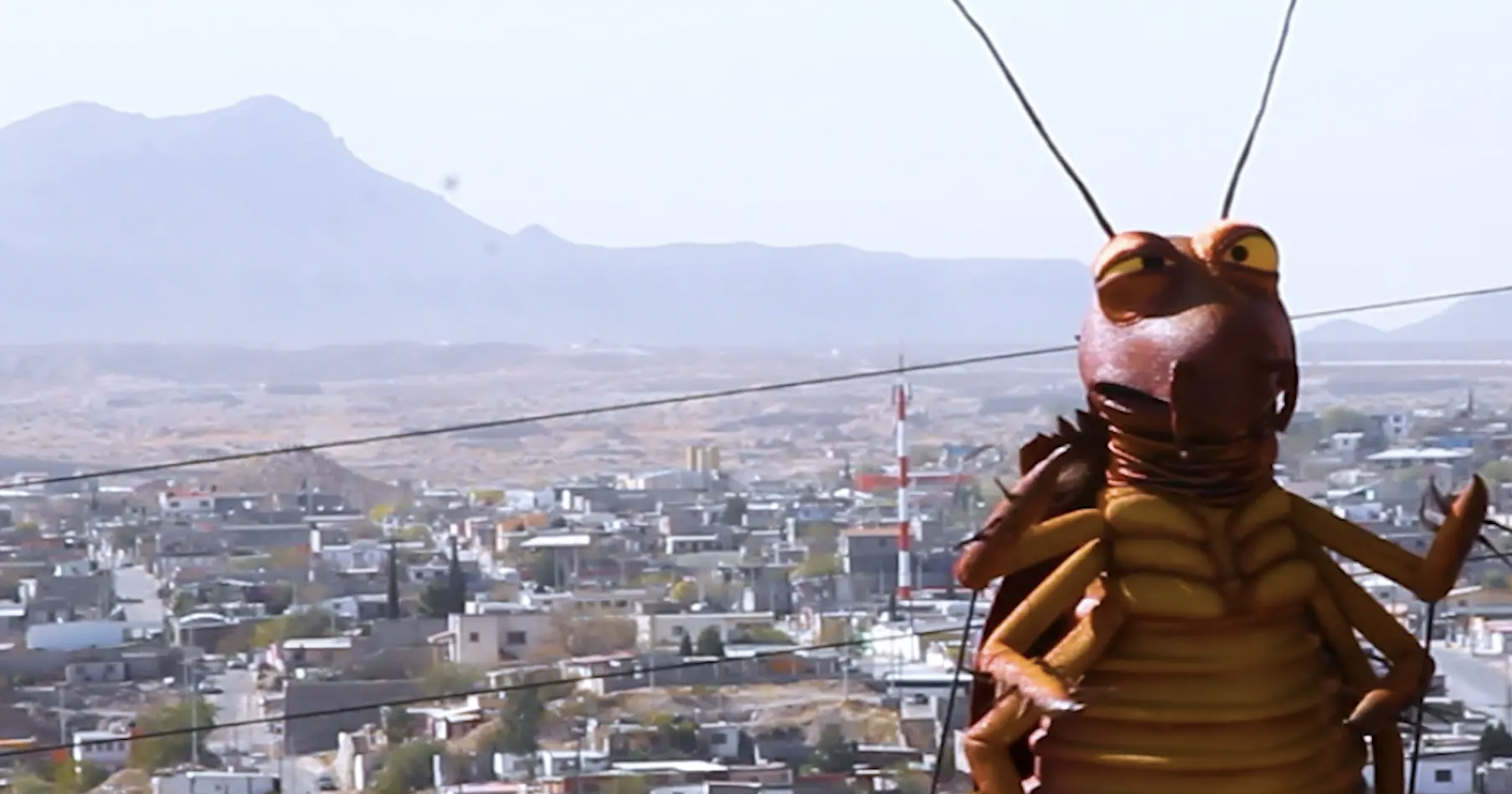
MinerAlert

MinerAlert

Additional Virtual Content Below
Cockroaches—brought to this continent by the colonial enterprise yet maligned for thriving amidst difficult circumstances—are enduring, symbols of futurity in the most extensive museum exhibition to date for ![]() . For more than a decade,
. For more than a decade,![]() members have made conceptual artworks that mine and disrupt archives of the Juárez border region, of life in states of exception and expiation. Their research involves surveillance, historical materials, symbols, and narratives, and results in installations that speak to the violent, extractive dynamics between powerful and “lesser” life forms in the desert and elsewhere, across time.
members have made conceptual artworks that mine and disrupt archives of the Juárez border region, of life in states of exception and expiation. Their research involves surveillance, historical materials, symbols, and narratives, and results in installations that speak to the violent, extractive dynamics between powerful and “lesser” life forms in the desert and elsewhere, across time. ![]() artworks and site-related projects are intellectually expansive, always involving collaborators. The results are observational, approaching the land and its inhabitants from a distance that suggests their politic and engaging the language of seriality, to investigate past and present conditions and to propose future possibilities.
artworks and site-related projects are intellectually expansive, always involving collaborators. The results are observational, approaching the land and its inhabitants from a distance that suggests their politic and engaging the language of seriality, to investigate past and present conditions and to propose future possibilities.
The Liquid Gates of Time was created for the Rubin Center at UTEP, an institution that has longed played a role in shaping narratives about the borderlands and its people. Within this context, ![]() subverts the taxonomic impulse and histories of extraction, presenting artworks alongside materials from the university’s Biodiversity Collections of native specimens, Centennial Museum collection of cultural artifacts, and Special Collections archives of border initiatives. The project extends beyond the gallery walls, including a permanent intervention in the Centennial’s gardens, public events outside, and a publication, gestures that materialize
subverts the taxonomic impulse and histories of extraction, presenting artworks alongside materials from the university’s Biodiversity Collections of native specimens, Centennial Museum collection of cultural artifacts, and Special Collections archives of border initiatives. The project extends beyond the gallery walls, including a permanent intervention in the Centennial’s gardens, public events outside, and a publication, gestures that materialize ![]() involvement with a range of voices to create glitches against the hegemony of the gaze, of capital.
involvement with a range of voices to create glitches against the hegemony of the gaze, of capital.
The Liquid Gates of Time speaks to the domination of subject, through naming, study, collection, art, writing, and exhibition-making. Presented in the Rubin’s atrium and largest gallery, and featuring approximately two-dozen artworks offset by lighting and wall color, the installation evokes the night life where diverse, subversive culture has always thrived in Juárez, as elsewhere. The exhibition revolves around newly commissioned work, including a video suggesting ulterior life forms realizing liberation in the desert, a large metal sculpture visually referencing rejas (home security bars), an oversized cast cockroach with diagrams suggesting evolved states, and images of spaces beneath border bridges—between systems—that are being depleted of water in the name of capital. Existing works include paintings, sculptures, photographs, and objects making visible clandestine acts—of creativity, violence—emerging in the carceral state.
The Liquid Gates of Time: A Project by ![]() , suggests that, while post-enlightenment civic institutions, including academies, museums, and prisons, are grounded in oppressive hierarchies of ideas, materials, landscapes, and people, nevertheless tools for dismantling systems and boundaries, whether ideological, geographic, or temporal, persist. Critical creative endeavors—music, art, exhibitions, texts, archives, dialogues—continue to trouble the post-colonial logic that limits our institutions, and creates prisons in our minds.
, suggests that, while post-enlightenment civic institutions, including academies, museums, and prisons, are grounded in oppressive hierarchies of ideas, materials, landscapes, and people, nevertheless tools for dismantling systems and boundaries, whether ideological, geographic, or temporal, persist. Critical creative endeavors—music, art, exhibitions, texts, archives, dialogues—continue to trouble the post-colonial logic that limits our institutions, and creates prisons in our minds.
The Liquid Gates of Time: A Project by ![]() is guest curated by Kate Green, Ph.D., a curator and writer living in El Paso.
is guest curated by Kate Green, Ph.D., a curator and writer living in El Paso.
Conversation with guest curator, Dr. Kate Green Executive Director, Museum of Contemporary Art Tucson and Dr. Josiah Heyman, UTEP Professor of Anthropology and Director of UTEP’s Center for Interamerican and Border Studies.
 |
The artists have created a 4 minute video interview with Max the Roach in which he theorizes on modernity and the transgression of limits from an undisclosed location in view of Ciudad Juarez. It is an informative complement to the exhibition, drawing attention to and elaborating on the artists's interest in the concept of a failed taxonomy of the border. If you would like to view the video please write Rubin Center Director Kerry Doyle at kadoyle@utep.edu for the link and password.